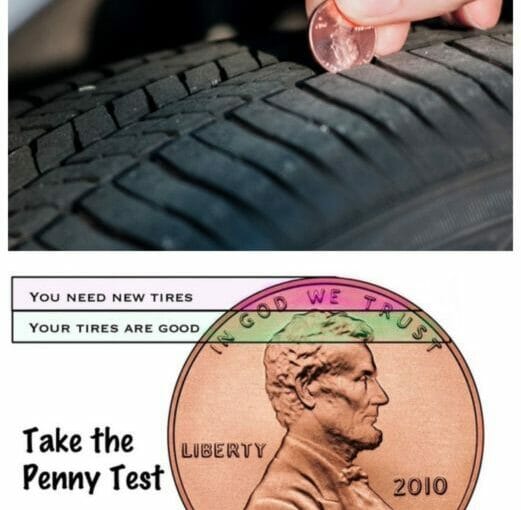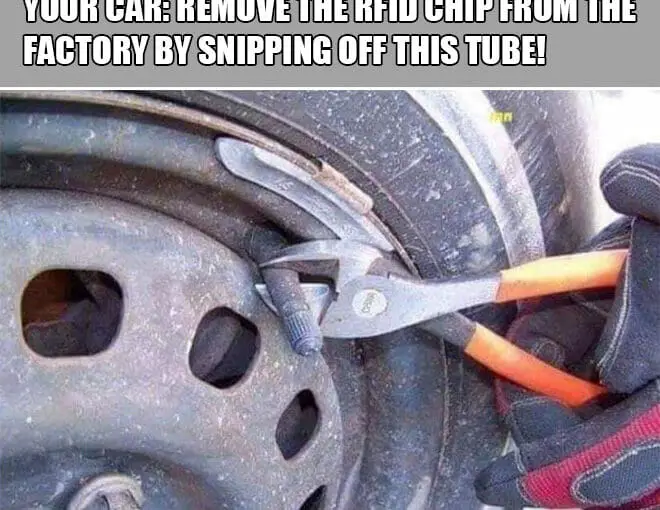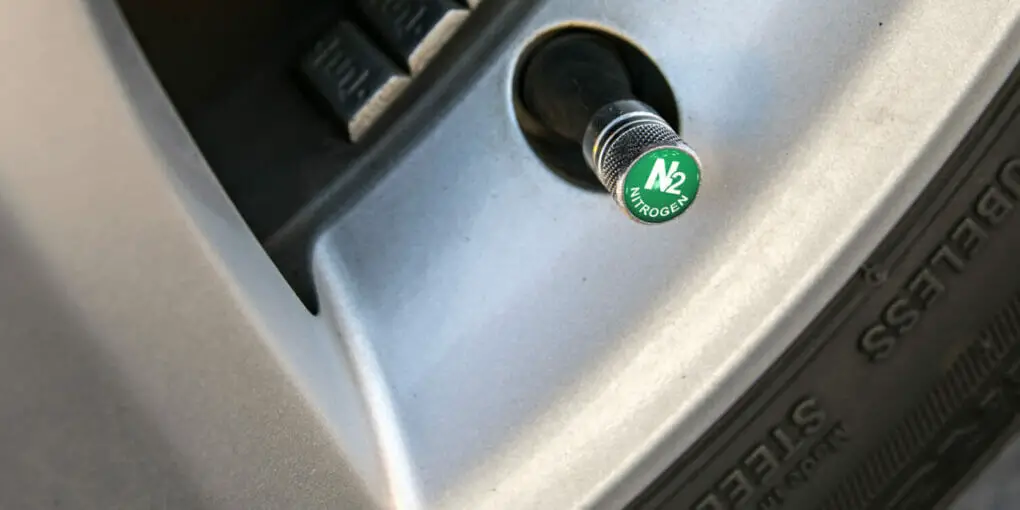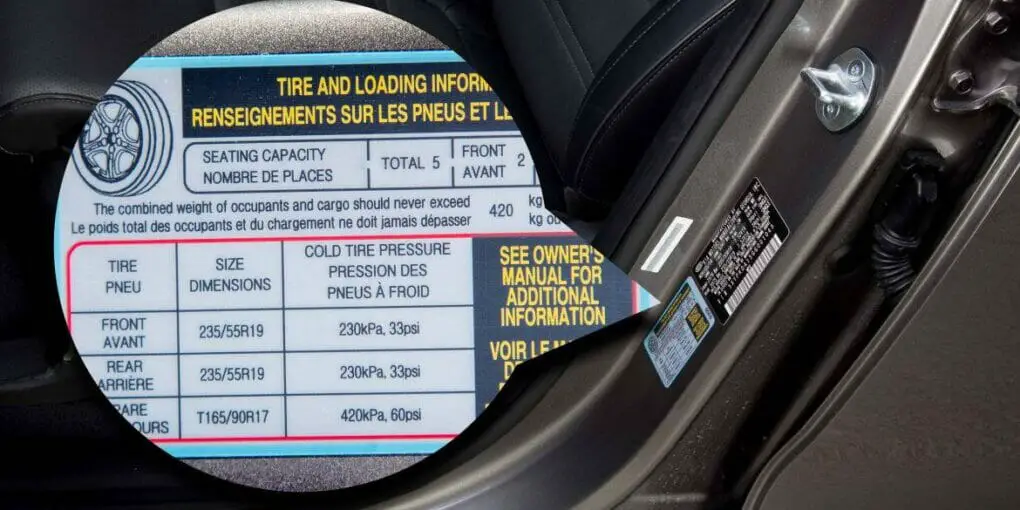- Home
- Blog
How to Check All Weather Tires
When driving in wintry weather conditions, it’s important to have the proper tires on your vehicle. All-weather tires are designed to provide good traction in both wet and dry conditions, as well as in light snow. If you live in an area that experiences a lot of winter weather, or if you plan to travel during the winter months, it’s a good idea to invest in a set of all-weather tires.
- Look at the tread depth of your tires
- All-weather tires should have a tread depth of at least 4/32 of an inch
- Check for any visible damage to the tire, such as cracks or cuts in the sidewall
- Inspect the tread pattern for any irregularities
- Compare the wear on all four tires
- Uneven wear can indicate a problem with your suspension or alignment
All-weather tires and what the symbols on the sidewalls of tires mean @UrbanAutomotiveOakville
How Can You Tell If All-Season Tires are Still Good?
If you’re unsure about whether or not your all-season tires are still good, there are a few things you can check. First, take a close look at the tread. If the tread is worn down to less than 4/32 of an inch, it’s time to replace the tires.
You can also check for cracks or splits in the sidewall of the tire – if you see any, it’s time for new tires.Another way to tell if your all-season tires are still good is to pay attention to how they perform in different weather conditions. All-season tires are designed to provide good traction in both wet and dry conditions, but if you notice that your traction is slipping in either extreme, it might be time for new tires.
Finally, if your all-season tires are more than six years old, it’s probably time to replace them regardless of their condition. Tires deteriorate over time even if they’re never used, so don’t wait until they’re completely worn out before getting new ones.
How Do I Know If My Tires are All-Season Or Winter Tires?
If you live in an area with cold winters and significant snowfall, then you’ll want to make sure you have winter tires on your car. But how can you tell if your tires are all-season or winter tires?There are a few ways to tell.
First, take a look at the tread pattern on your tires. All-season tires typically have shallower tread depths and fewer grooves than winter tires. This is because all-season tires are designed for use in a variety of conditions, including both dry and wet roads, while winter tires are specifically designed for icy and snowy conditions.
Another way to tell the difference between all-season and winter tires is by looking at the sidewall of the tire. Winter tires will often have a “snowflake” symbol on the sidewall, which indicates that the tire has been specifically designed for use in snowy conditions.If you’re unsure whether your car has all-season or winter tires, it’s always best to consult your owner’s manual or ask a professional at your local tire shop.
How Do I Know If I Have Summer Or Winter Tires?
If you live in an area with cold winters and hot summers, it’s important to have the right tires for each season. Summer tires are designed to provide good traction and handling in warm weather, while winter tires are made to grip icy roads. So how do you know if you have summer or winter tires?
One way to tell is by looking at the tread pattern. Summer tires typically have shallower tread depths than winter tires. This helps them grip the road better in warm weather but can cause them to slip on ice and snow.
Winter tires, on the other hand, have deeper tread depths that help them bite into icy surfaces.Another way to tell summer and winter tires apart is by their rubber compound. Summer tire rubber is harder and more resistant to heat than winter tire rubber.
This helps summer tires maintain their shape and grip on hot days. Winter tire rubber is softer and more pliable, which allows it to stay flexible in colder temperatures and grip icy roads better.If you’re not sure whether your car has summer or winter tires, check the sidewall of the tire for a “M+S” mark.
This indicates that the tire is suitable for both mud and snow conditions – perfect for winter driving!
What is the Symbol for Winter Tires?
There is no one-size-fits-all answer to this question, as the symbol for winter tires can vary depending on the manufacturer. However, many manufacturers use a snowflake or mountain symbol to indicate that a tire is designed for winter driving conditions. If you’re unsure about which symbol to look for, it’s always best to consult your owner’s manual or ask a representative from your tire retailer.
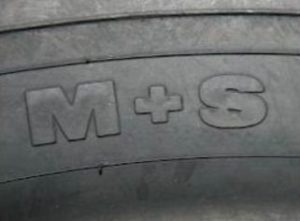
Credit: www.tires-easy.com
All-Season Vs All-Weather Tires
All-season tires are designed to provide good traction and handling in a variety of conditions, including dry and wet pavement, as well as in light snow. All-weather tires are a type of all-season tire that is specifically designed to perform well in colder temperatures and on snowy roads.One major difference between all-season and all-weather tires is the tread design.
All-season tires typically have shallower tread depths than all-weather tires. This means that all-season tires may not provide as much traction on icy or snow-covered roads as all-weather tires.Another difference between these two types of tires is the compound used in the rubber.
All-weather tires typically use a compound that remains flexible in colder temperatures, which helps them grip the road better in winter weather.So, which type of tire is right for you? If you live in an area with mild winters and mostly clear roads, then all-season tires may be a good option.
However, if you live in an area with harsher winters and more snowfall, then all-weather tires may be a better choice.
How to Tell If Your Tires are Summer Or All-Season
When it comes to tires, there are two main types: summer and all-season. So, how can you tell which type you have? And does it really matter?
Here’s a quick guide to help you out.First, let’s start with all-season tires. These are designed to provide good traction and handling in a variety of conditions, including wet weather and light snow.
They typically have a symmetrical tread pattern and may even have some sipes (thin slots) cut into the tread blocks to improve traction on slippery surfaces. All-season tires are a great option if you do most of your driving on dry roads but still want some peace of mind in case you encounter bad weather.Now, onto summer tires.
These are meant for warm, dry conditions when maximum grip is desired. They usually have an asymmetrical tread pattern with large outer tread blocks that help provide lateral grip when cornering. The tradeoff is that they don’t handle as well in the rain and can be more susceptible to hydroplaning.
Summer tires also tend to wear out faster than all-season tires when used in cooler temperatures or on rougher roads.So, how can you tell which type of tire you have? If you’re not sure, take a look at the sidewall – it should say either “summer” or “all season” somewhere on there.
Alternatively, consult your owner’s manual or ask a professional at your local tire shop. Once you know what type of tire you have, be sure to use them accordingly!
All-Season Tire Symbol
When you’re shopping for tires, you may have noticed a small symbol on some of the tires that says “All Season.” But what does that mean?An all season tire is a type of tire that is designed to perform well in a variety of conditions, including wet weather and light snow.
They are a good choice for most drivers in most parts of the country.If you live in an area with heavy snowfall, you may want to consider investing in winter tires. Winter tires are designed specifically for use in snow and ice and can provide better traction and handling than all season tires.
If you’re not sure whether all season or winter tires are right for your vehicle, consult your owner’s manual or talk to a qualified automotive technician.
Conclusion
If you live in an area with a lot of inclement weather, it’s important to make sure your tires can handle the conditions. There are a few things you can do to check if your tires are up for the task.First, take a look at the tread depth.
You should have at least 4/32 of an inch of tread remaining. If you don’t, it’s time to replace your tires.Next, check for any cracks or cuts in the sidewalls of your tires.
These can weaken the structure of the tire and cause a blowout.Finally, make sure your tires are properly inflated. Under-inflated tires can lead to hydroplaning on wet roads.
By following these simple steps, you can ensure that your tires are ready for whatever Mother Nature throws their way.
How to Check Your Tires
It’s important to know how to check your tires. Not only will it save you money, but it could also save your life. Here are some tips on how to check your tires:
1. First, you’ll want to check the air pressure in all of your tires. You can do this with a tire gauge, which is relatively inexpensive and can be found at most auto parts stores. If the pressure in any of your tires is low, you’ll need to add air until it reaches the recommended level.
2. Next, you’ll want to take a look at the tread on your tires. This is important because it affects traction and can be dangerous if it gets too low. A simple way to check tread depth is by using a penny; if Abraham Lincoln’s head is visible when you insert the penny into the tread, that means the tread is shallow and needs to be replaced soon.
How to Check Your Tire Tread Depth with a Gauge or a Penny
- Park your car on a level surface and turn off the engine
- Locate the tire pressure gauge in your vehicle’s glove box, center console, or trunk
- Remove the cap from the valve stem on one of your tires
- Place the tip of the tire pressure gauge onto the valve stem and press down firmly to get an accurate reading
- Compare the reading on the tire pressure gauge to your vehicle’s recommended tire pressure levels
- If necessary, add air to your tires with a portable air compressor or at a gas station until you reach the recommended level
How to Check Tire Tread
If you want to be a safe driver, it is important to know how to check tire tread. Tires with little tread can be dangerous, especially in wet or icy conditions. There are a few different ways that you can check your tire tread depth.
One way is to use a penny. Insert the penny into the tread groove with Lincoln’s head upside down and facing you. If you can see all of Lincoln’s head, your tread depth is less than 2/32 inch and it is time to replace your tires.
Another way to check tread depth is to use a tread wear indicator bar. These bars are designed so that when they become level with the surrounding tread, it means the tire needs replaced. You can usually find these bars in several locations around the tire’s circumference.
Simply look for them while running your hand over the surface of the tire.If you don’t have access to a penny or a tread wear indicator bar, there is one final way you can measure your tire’s tread depth- by using a ruler or measuring tape. Place the ruler horizontally across the center of the tire at its widest point and measure from there down to the top of the tread grooves.
Each groove should be at least 1/16th of an inch deep in order for your tires to be considered safe. Anything less than that and it’s time for new tires!
How to Check Tires With a Penny
It’s important to regularly check your tires to ensure they are properly inflated and in good condition. Here’s a quick and easy way to check your tires with a penny.First, find a penny and insert it into the tread of your tire.
If you can see all of Abraham Lincoln’s head, then your tread is too worn down and you need new tires. If you can only see part of his head, then your tread is still okay but getting close to needing replacement.In addition to checking the tread, also make sure to check the air pressure in your tires at least once a month.
You can do this easily with a home air compressor or by taking your car to a gas station that has an air pump. Properly inflated tires will help improve gas mileage and extend the life of your tires!
Tire Inspection Cost
If you’re a driver, then you know that maintaining your vehicle is important. Part of that maintenance is making sure your tires are always in good condition. Tires can be expensive, so it’s important to know how much it will cost to have them inspected.
Generally, tire inspection costs will depend on the type of vehicle you have and the number of tires that need to be checked. For most passenger vehicles, expect to pay around $30 for a tire inspection. However, if you have a larger vehicle or more than four tires that need to be checked, the cost may be higher.
At a minimum, you should get your tires inspected once a year – preferably before winter hits. This way, you can make sure they’re properly inflated and don’t have any cracks or other damage that could cause problems down the road. If you wait too long to get your tires inspected, you may end up paying more in repairs or replacements later on.
So next time you’re due for a tune-up, don’t forget to add tire inspection to the list! It may not be the most exciting part of car maintenance, but it’s certainly one of the most important.
Tire Check near Me
If you’re looking for a tire check near you, there are a few things to keep in mind. First, make sure that the shop you choose is reputable and has experience with the type of vehicle you drive. Secondly, schedule an appointment in advance so that you don’t have to wait around for an available technician.
Lastly, be prepared to answer questions about your driving habits and vehicle maintenance history so that the technicians can properly assess your needs.
How to Check Tire Tread With a Gauge
Assuming you would like a blog titled “How to Check Tire Tread With a Gauge”:It is important to regularly check your tire tread in order to maintain optimal driving conditions and safety. You can check your tire tread with a gauge, which is a simple and easy process.
First, locate the tread wear indicator bars that are located in the deepest grooves of your tires. These bars are raised and flush with the rest of the tire when new, but as the tire wears down, these bars will become more pronounced.Next, take your gauge and place it in the groove of the tire next to the tread wear indicator bar.
The depth of the groove should be greater than or equal to 6/32” (4.8mm) in order for your tires to have enough tread left.If you find that any of your tires have less than 6/32” (4.8mm) of tread remaining, it is time to replace them. Be sure to consult your owner’s manual or local dealership for guidance on what type of replacement tires would be best for your vehicle make and model.
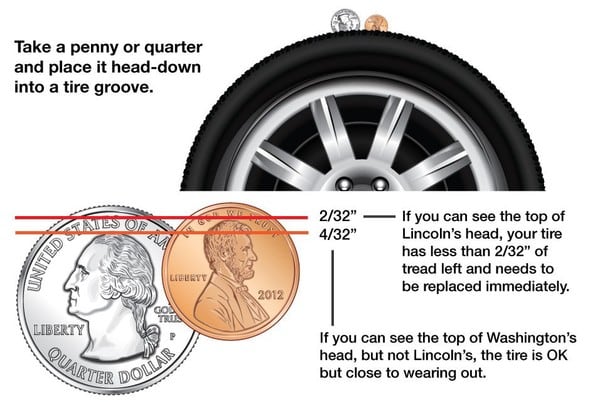
Credit: www.wowo.com
How Do You Check If Your Tires are Ok?
It is recommended that you check your tires at least once a month to ensure they are in good condition. There are a few things you can do to check if your tires are OK:1. Check the tread depth – The tread depth should be at least 4/32 of an inch.
You can use a tire tread depth gauge to measure this or simply insert a quarter into the tread groove. If the top of George Washington’s head is visible, then the tread depth is less than 4/32 of an inch and it’s time for new tires.
2. Look for signs of wear and tear – Check all four tires for evenly worn patterns.
Uneven wear could be a sign that something is wrong with your suspension or alignment. Also, look for cracks, bulges, or bald spots on the tires as these could cause blowouts.
3. Check the air pressure – Use a tire pressure gauge to check the air pressure in all four tires (including the spare).
The correct air pressure will be listed on either the driver’s door placard or inside fuel door flap. Don’t forget to check and adjust your tire pressure when it’s cold outside!
How Do I Check My Tires at Home?
It’s important to know how to check your tires at home, because it can help you avoid a blowout or other tire-related problems while on the road. Here’s what you need to do:1. Park your car on a level surface and turn off the engine.
2. Remove any hubcaps or wheel covers so you can see the entire tire.
3. Use a tire pressure gauge to check the air pressure in each tire. The recommended pressure will be listed on a sticker inside your driver’s side door, or in your owner’s manual.
4. If the pressure is low, use an air compressor or hand pump to add air until it reaches the recommended level.
5. Take a look at each tire to check for signs of wear and tear, such as cracks, bulges, or bald spots.
6. Use a lug wrench to loosen and remove any rocks or debris that may be lodged in the tread of your tires.
7. Finally, give each tire a quick spin to make sure they’re properly seated on the wheels before putting everything back together and hitting the road!
How Do You Tell If Tires Need Replace?
It is generally recommended that tires be replaced every six years, although this varies depending on the type of tire and driving habits. Many factors can affect how long tires last, including inflation levels, tread depth, weather conditions and driving habits.To check if your tires need to be replaced, start by looking at the tread depth.
Tires typically have tread wear indicator bars molded into the tread pattern which become visible when the tire’s remaining tread depth has reached 2/32nds of an inch. Once these bars are visible, it means the tire only has 2/32nds of an inch of tread left and needs to be replaced.In addition to checking the tread depth, also inspect your tires for any cracks or bulges in the sidewalls as these can indicate a structural issue that could lead to a blowout while driving.
If you notice any damage, replace the tire immediately.Finally, check your tires’ air pressure levels regularly using a gauge and inflate them to the recommended level listed in your car’s owner’s manual or on the placard inside your driver’s side doorjamb. Underinflated tires not only wear out faster but can also lead to decreased fuel efficiency and increased braking distances.
Conclusion
It’s important to check your tires regularly to ensure they are properly inflated and in good condition. Here’s how:First, find the right tire pressure for your car.
You can usually find this information on a sticker inside the driver’s door or in the owner’s manual.Next, use a tire pressure gauge to check the air pressure in each tire. If it’s low, add air until it reaches the correct level.
It’s also important to inspect your tires for signs of wear and tear. Look for cracks, bald spots, or anything else that doesn’t look normal. If you see any damage, it’s time to get new tires.
When Can Tire Be Patched
Tire patching can be done as soon as the puncture occurs. You’ll need to remove the tire from the wheel and then use a sharp object to puncture a hole in the center of the patch. The goal is to make the hole slightly bigger than the diameter of the nail.
Next, insert the tire plug into the hole. Finally, use a hand pump or an air compressor to inflate the tire.
Tire patching is a common repair that can extend the life of your tires. But when is the best time to patch a tire?There are a few things to consider when deciding whether or not to patch your tires.
The first is the severity of the damage. If the hole in the tire is small, then a patch may be all that is needed to fix it. However, if the hole is large or if there is significant damage to the sidewall of the tire, then a patch may not be enough and you may need to replace the tire entirely.
The second thing to consider is how old the tire is. A newer tire can usually be patched without issue, but an older tire may not hold up as well to being patched. If you’re not sure how old your tires are, you can check the DOT code on the side of each tire.
This code will tell you when the tire was manufactured, and you can use this information to determine whether or notpatching your tires makes sense.If you decide that patching your tires is right for you, there are a few things you’ll need in order to do it properly. First, make sure you have a good quality Tire Repair Kit .
This kit should include everything you need to safely and effectively patch your tires. Second, read all of the instructions that come with your kit before beginning any work. This will help ensure that you know exactly what you’re doing and that you don’t accidentally damage your tires further in the process.
Finally, have patience!
How Close to Sidewall Can a Tire Be Patched
If you’ve ever had a flat tire, you know that it’s important to get it patched up as soon as possible. But how close to the sidewall can a tire be patched?It’s actually not recommended to patch a tire too close to the sidewall.
The reason for this is that the sidewall is where most of the stress on a tire occurs. If there’s already weak spots in the sidewall, patching it could make those weak spots worse and cause the tire to fail.So, if you have a flat tire, it’s best to take it to a professional who can properly assess the damage and patch it up accordingly.
They’ll make sure that your tire is safe to use and will help extend its lifespan.

Credit: www.tireoutlet.com
When Can a Tire Not Be Patched?
A tire cannot be patched if the tread is worn down to the point where there is no rubber left. Once a tire gets to this point, it needs to be replaced.
How Do You Know If a Tire Can Be Patched?
If you have a puncture in your tire, you may be wondering if it can be patched. The good news is that most tires can be patched, as long as the damage is not too severe. There are a few things to consider when determining if your tire can be patched:
1. The size of the hole: If the hole in your tire is less than 1/4 inch in diameter, it can likely be repaired. However, if the hole is larger than that, it may not be safe to patch and you will need to replace the tire.2. The location of the hole: If the hole is located in the tread of the tire (the part that comes into contact with the ground), it can usually be patched.
However, if the hole is located in the sidewall of the tire, it is much more difficult to repair and you may need to replace the tire.3. The type of damage: If the damage to your tire was caused by a nail or other sharp object, it can likely be repaired with a patch. However, if the damage was caused by something like a large rock or curb, it may not be possible to safely repair your tire and you will need to replace it.
If you are unsure whether or not your tire can be safely repaired, always err on the side of caution and take it to a professional mechanic for an inspection before trying to patch it yourself.
Is It Ok to Just Patch a Tire?
It’s not ideal to just patch a tire. It’s better to replace the tire if at all possible. If you must patch a tire, make sure you do it correctly.
Incorrectly patched tires can be dangerous.
Is It Better to Patch a Tire Or Plug It?
It is better to patch a tire than plug it. This is because plugs only work if the hole in the tire is small and in the tread. If the hole is bigger or in the sidewall, then a patch will be needed.
Conclusion
Tire patches can be used to fix a number of different problems with your tires. If you have a hole in your tire, you can use a patch to repair it. If you have a puncture in your tire, you can use a patch to repair it.
If you have a leak in your tire, you can use a patch to repair it.
When Did They Start Putting Date Codes on Tires
Tire date codes are a series of letters and numbers that indicate when a tire was manufactured. The code is typically located on the sidewall of the tire, and it provides important information about the tread life and safety of the tire. While most tires have date codes, not all do.
If you’re not sure if your tires have date codes, take a look at the sidewall to see if there is anything printed there that looks like a code. If you don’t see anything, your tires probably don’t have them.
Most people don’t know that tires have date codes stamped on them. These codes tell you when the tire was manufactured, and they’re important for safety. Here’s a quick guide to understanding tire date codes.
Tire date codes are usually found on the sidewall of the tire, and they look like this: “DOT XXYYZZ.” The first two numbers (XX) represent the week of production, while the second two numbers (YY) represent the year. The last three numbers (ZZ) are plant code identifiers.
So, a tire with the code “DOT 121052” was produced in the 12th week of 2010 at Plant 52.It’s important to check your tires’ date codes regularly, because tires degrade over time even if they’re not being used. Heat, UV light, and ozone can all cause cracking and other damage to rubber.
If you have old tires on your car, it’s best to replace them with new ones as soon as possible.
Tire Manufacture Date Code
Most tires have a date code stamped on the sidewall that indicates when the tire was manufactured. This code is usually 4 digits long and represents the week and year the tire was made. For example, a code of 1210 would indicate that the tire was manufactured during the 12th week of 2010.
The first 2 digits represent the week of manufacture and the last 2 digits represent the year. In most cases, you can find this information on both new and old tires. However, if you can’t find a date code on your tires, it’s likely because they were manufactured before 2000.
Tires manufactured after 2000 have a mandatory Tire Identification Number (TIN) that includes information such as manufacturer’s name or brand, manufacturing plant location, size of tire, etc. The TIN also includes the date code, which is typically 4 digits long and represents the week and year in which it was manufactured (as described above).If you’re trying to determine how old your tires are, simply look for the date code stamped somewhere on the sidewall.
If you can’t find one, chances are your tires were made before 2000 and don’t have a TIN.

Credit: www.goodyear.com
When Did Tires Get Dates?
Tires have been around for a long time, but it wasn’t until recently that they began to feature dates. The date is stamped on the sidewall of the tire and indicates when the tire was manufactured. Tires are typically good for about 10 years, so this date can be used to determine how old your tires are.
If you have older tires, it’s important to check them regularly for wear and tear.
Do All Tires Have a Date Code?
Most tires do have date codes. The date code is usually located on the sidewall of the tire, and indicates when the tire was manufactured. The date code consists of a four-digit code that represents the week and year the tire was made.
For example, a tire with a date code of “1210” would have been made in the 12th week of 2010.Not all tires have date codes, however. Tires that are intended for use as original equipment on vehicles (OEM tires) often do not have date codes.
This is because OEM tires are typically shipped to vehicle manufacturers well in advance of when the vehicles are actually assembled and put on sale. As such, there is no need for a date code on these tires, since their age is not relevant to consumers.There are also some aftermarket tires that do not have date codes.
These are usually lower-cost or budget-priced tires that are produced in very large quantities to meet demand from consumers who want inexpensive replacement tires. Since these types of tires tend to have shorter lifespan than more expensive premium or performance tires, their age is not as important to consumers either.
How Do You Read Old Tire Dot Numbers?
Most people don’t know how to read old tire DOT numbers, but it’s actually not that difficult. The DOT code is made up of 11 characters, and each character has a specific meaning. The first two characters indicate the manufacturing plant where the tire was made.
The next nine characters represent the week and year the tire was manufactured, in a coded format.For example, if the first two characters are “01”, that means the tire was manufactured at Plant 01. The next two digits represent the week of manufacture, so “01” would mean the 1st week of production.
The last four digits represent the year, so “1801” would mean 2018 (the 18th year of this century).So, if you see a DOT code on a tire that reads “011801”, you can be sure that it was manufactured at Plant 01 during the 1st week of 2018.
Do All Tires Have a Dot Code?
Most tires produced in North America have a DOT code. The code consists of the letters “DOT” followed by a series of numbers and letters. The first two numbers indicate the week of production, and the last two numbers indicate the year.
The remaining letters and numbers are used to identify the tire model and size.The DOT code is required by law to be stamped on all tires sold in the United States. It is used to track recalls and other safety information about tires.
Conclusion
Tires are an essential part of a vehicle, and it is important to keep track of when they were made. Most tires have date codes that tell you when they were manufactured. These codes can be helpful if you need to know when to replace your tires.
Why is My Tire Rubbing and What Can I Do About It?
If you’re experience tire rub when making a turn, there are a few potential causes. First, your tires may be overinflated or misaligned. Both of these issues can cause the tread to wear down prematurely and make it more difficult for the tire to grip the road.
Additionally, if your vehicle’s suspension is worn out or needs repairs, this can also contribute to tire rub. Ultimately, if you’re hearing a rubbing sound coming from your tires every time you turn, it’s best to have a professional take a look so they can diagnose and fix the problem.
If you’ve ever experienced your tire rubbing when you turn, you know it’s not a fun feeling. Tire rub can cause damage to your tires and even your suspension. So why does it happen?
There are a few reasons why your tire may be rubbing when you turn. One possibility is that your wheel isn’t properly aligned. This can cause the tire to rub against the inside of the fender or wheel well.
Another possibility is that your suspension isn’t level, which can also cause the tire to rub. Finally, if you have aftermarket wheels or tires, they may not be compatible with your vehicle and could be causing the issue.If you’re experiencing tire rub, the best thing to do is take your car to a qualified mechanic or dealership and have them check things out.
They’ll be able to diagnose the problem and recommend a solution. In some cases, simply adjusting the alignment or suspension can solve the problem. However, if you have aftermarket parts that are causing issues, you may need to replace them with compatible parts.
How Do I Stop My Tires from Rubbing When I Turn?
If your tires are rubbing when you turn, it’s likely because your wheel alignment is off. When your wheels are out of alignment, they’re not pointing in the same direction as the rest of your car. This can cause all sorts of problems, including uneven tire wear and—you guessed it—rubbing.
The best way to fix this problem is to get a wheel alignment.
How Do You Fix Wheel Rubs?
If your car is experiencing wheel rubs, there are a few things you can do to fix the problem. First, check the alignment of your wheels. If they’re not properly aligned, they can rub against the inside of your wheel well.
You can usually tell if your wheels are misaligned if your car drifts to one side or the other when you’re driving straight. You can have a professional align your wheels, or you can adjust them yourself with an alignment tool.If wheel alignment doesn’t solve the problem, then it’s likely that your tires are the wrong size for your wheels.
Wheel rubs occur when there’s too much space between the edge of your tire and the edge of your wheel well. This gap allows the tire to flex and rub against the inside of the wheel well when you turn or go over bumps in the road. The solution is to install tires that are narrower than your current ones.
You may need to consult a professional to find out what size tires will fit your wheels without causing rubbing.In some cases, wheel rubs can also be caused by suspension problems. If your car’s suspension is too soft, it can allow the wheels to move around too much and cause rubbing.
To fix this, you’ll need to stiffen up your suspension with thicker shocks or springs. Again, this is something best left to a professional unless you’re very familiar with car suspensions.Wheel rubs are usually easy to fix once you know what’s causing them.
By properly aligning your wheels and installing narrower tires, you should be able to eliminate rubbing altogether.
Why is My Tire Rubbing on One Side?
If you’ve ever had a tire rub on one side, you know it can be a frustrating experience. There are a few different reasons why this may happen, but the most common reason is because of an issue with your wheel alignment.When your wheels are out of alignment, it means that they’re not pointing in the same direction.
This can cause your tires to rub against each other or against the inside of your car’s wheel well. Wheel alignment issues can be caused by something as simple as hitting a pothole or curb, so if you’ve recently been driving on rough roads, that could be the culprit.If you suspect that your wheel alignment is off, the best thing to do is take your car to a trusted mechanic or tire shop and have them take a look.
They’ll be able to adjust your wheels so that they’re properly aligned and hopefully fix the tire rubbing problem.
Why Does My Right Front Tire Sound Like Its Rubbing When I Turn Corners?
If you’re hearing a rubbing sound coming from your right front tire when you turn corners, there are a few potential causes. One possibility is that the wheel is not properly aligned and is making contact with the suspension or body of the car. Another possibility is that there’s something caught in between the tire and wheel well, such as a rock or piece of debris.
If you suspect either of these issues, it’s best to have your car checked out by a mechanic to ensure that everything is in working order.
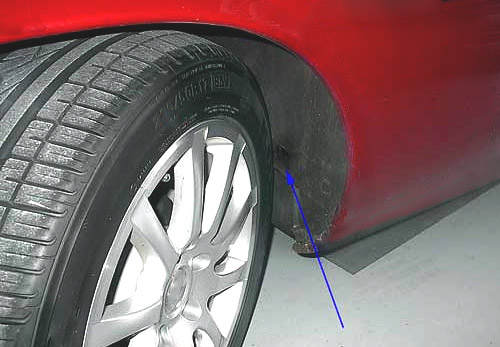
Credit: www.newroads.ca
Front Tires Rubbing When Turning
If you’re experiencing front tire rub when turning, it’s likely due to one of two things: either your tires are too wide for your wheel wells, or your suspension is misaligned. If your tires are too wide, the easiest solution is to get a set of narrower tires. But if you’re suspension is out of alignment, that’s a more serious problem that will need to be addressed by a mechanic.
There are a few signs that your suspension is out of alignment: first, if you notice that your car seems to pull to one side when driving straight; second, if you have uneven tire wear; and third, if you hear strange noises coming from your tires or suspension when turning. If any of these sound familiar, then it’s time to take your car in for an alignment.
Conclusion
If you’re noticing your tire rubbing when you turn, it’s likely due to one of three things: your wheel is misaligned, your suspension is damaged, or your tires are the wrong size.A wheel that is out of alignment will cause your tire to rub on the inside or outside of the wheel well. This can be caused by hitting a pothole or curb, or simply from wear and tear over time.
Damage to your suspension can also cause tire rubbing. If your shocks or struts are worn out, they may not be able to properly support the weight of the vehicle, causing the tires to make contact with the body of the car. This can also lead to uneven wear on your tires.
Finally, if you have installed new tires that are a different size than the ones that came with your car, they may rub on certain parts of the vehicle when turning. Always consult your owner’s manual or a professional mechanic to ensure you’re using the correct sized tires for your car.
4 Warning Signs That It’s Time to Change Your Tires [Update]
It’s important to know when to change your tires so you can stay safe on the road. There are a few things you can look for to know when it’s time to change your tires. If you see any cracks or bulges in your tires, it’s time for a change.
Your tread should also be at least 6/32 of an inch thick. You can check this by placing a penny head first into the tread. If you can see all of Lincoln’s head, then it’s time for new tires.
It’s important to know when to change your tires, because driving on old tires is dangerous. Here are a few things to look for to know when it’s time to get new tires: 1. If your tread is worn down, it’s time for new tires.
You can check the tread by doing the “penny test.” Place a penny into the tread with Lincoln’s head upside down and facing you. If you can see all of Lincoln’s head, then your tread is too shallow and needs to be replaced.
2. Look for cracks or bulges in the sidewall of the tire. These are signs that the tire has been damaged and is at risk of bursting. 3. Pay attention to how your car feels while you’re driving.
How Do I Know When My Tires Need Replacing?
It’s important to regularly check your tires for wear and tear, as well as proper inflation. Depending on how often you drive, and the conditions of the roads you typically travel on, your tires can deteriorating relatively quickly. Here are a few things to look out for that indicate it might be time for new tires:
1. The tread depth is below the minimum legal requirement. In the U.S., this is 2/32″ of tread remaining. You can check this easily with a tread depth gauge (available at most auto parts stores), or by doing the “penny test.” Take a penny and insert it upside down into the tread groove. If you can see all of Lincoln’s head, then your tread depth is less than 2/32″.
2. The tire is excessively worn on one side or unevenly worn across the tread surface. This could be due to incorrect wheel alignment, overinflation or underinflation, improper tire rotation patterns, or even just hitting too many potholes! If you notice your tires are wearing unevenly, have them checked out by a professional as soon as possible before they cause further damage to your suspension components.
3. There are cracks or cuts in the sidewall of the tire. While small cracks may not seem like a big deal, they can grow quickly and cause serious problems if left unchecked. Anytime you see any type of damage to your tires, no matter how small, it’s best to have them inspected by a professional right away just to be safe.
4. The tire has been punctured or otherwise damaged and has lost air pressure .If you’ve had a flat tire or run over something sharp enough to puncture your tire, it’s important to get it repaired or replaced immediately before driving any further on it . Continuing to drive on a damaged tire puts you at risk for further flats , blowouts ,and other accidents .
How Often Do Tires Need to Be Replaced?
Tires are one of the most important parts of your car, and it’s important to keep them in good condition. Tires typically need to be replaced every 3-5 years, though this can vary depending on the type of tire and how often they’re used. If you frequently drive on rough roads or in bad weather, your tires may wear out faster and need to be replaced more often.
It’s a good idea to check your tires regularly for signs of wear, such as cracks, bald spots, or uneven tread. If you notice any of these things, it’s time to get new tires.
How Long Do Car Tires Last?
Car tires are one of the most important parts of your vehicle, and it is important to know how long they should last. Depending on the type of car you have, as well as your driving habits, tires can last anywhere from 20,000 to 50,000 miles. However, there are a few things you can do to help extend the life of your tires.
One way to help extend the life of your tires is by making sure they are properly inflated. This will help prevent them from wearing down too quickly. You should also avoid driving on rough roads whenever possible as this can also damage your tires.
If you take care of your tires and drive carefully, you can expect them to last for many years.

Credit: www.wikihow.com
Symptoms of Bad Tires
It’s important to know the symptoms of bad tires so you can replace them before they cause an accident. Here are some signs that your tires may be in need of replacement: 1. Uneven tread wear – If you notice that the tread on your tires is wearing down unevenly, it’s a good indication that they need to be replaced.
Uneven tread wear can be caused by a number of factors, including improper tire inflation, alignment issues, or even just driving on rough roads. 2. Cracks in the sidewall – Take a close look at your tires and see if you notice any cracks in the sidewall. These cracks can weaken the structure of the tire and cause a blowout while you’re driving.
3. Bulges or bumps – If you see any bulges or bumps on your tires, it’s another sign that they need to be replaced. These bulges are usually caused by internal damage to the tire and can lead to a blowout if not fixed. 4. Excessive vibration – If you feel excessive vibration coming from your tires while you’re driving, it could be an indication that they’re worn out and need to be replaced.
This is often most noticeable at higher speeds.
Conclusion
It’s important to know when to change your tires so that you can stay safe on the road. There are a few things to look for whedecidingde if it’s time for a new set of tires. If your tread is wearing down, you’re having trouble with traction, or your tires are starting to show signs of wear, it’s probably time for a change.
You can check your owner’s manual or ask a mechanic to help determine how often you should change your tires.
When Do Tires Need Replaced
Most car owners don’t think about their tires until there’s a problem. But tires are one of the most important parts of your car, and it’s important to take care of them. Here’s what you need to know about when to replace your tires.
Tires are made of rubber, which means they will eventually wear out. The average tire lifespan is around 50,000 miles, but this can vary depending on the type of tire and how you drive. If you regularly drive on rough roads or in hot weather, your tires will wear out faster.
You’ll know it’s time to replace your tires when you start to see cracks in the rubber or bald spots. It’s also a good idea to get new tires if your tread depth is less than 4/32 inch. You can check this by inserting a quarter into the tread groove: if the top of George Washington’s head is visible, then it’s time for new tires!
Tires are one of the most important parts of your car, and it’s important to know when they need to be replaced. Here are a few signs that it’s time for new tires:1. Your tread is worn down.
One of the easiest ways to tell if your tires need to be replaced is by checking the tread. If it’s worn down below the minimum depth, then it’s time for new tires. You can check the tread depth with a penny – if Lincoln’s head is visible, then you need new tires.
2. You’re experiencing a lot of vibration.If you start to feel vibrations coming from your steering wheel or seat, it could be a sign that your tires are unbalanced or wearing unevenly. This can cause premature wear and tear, so it’s best to get new tires as soon as possible.
3. Your car is pulling to one side.This could be another sign of uneven tire wear, but it could also indicate other problems like alignment issues or suspension problems.
When Do Tires Need to Be Replaced Tread Depth
Tire tread depth is an important factor in determining when to replace your tires. The general rule of thumb is that if the tread depth is less than 1/4″, it’s time to replace the tire. However, there are a few other factors to consider as well.
If you frequently drive on wet or icy roads, it’s important to have tires with good tread depth. This will help you maintain traction and avoid accidents. If you live in an area with a lot of potholes or other road hazards, deeper treads can also help protect your tires from damage.
In general, summer and performance tires should be replaced sooner than all-season or winter tires. This is because they wear down faster due to the higher temperatures and increased use.If you’re unsure about when to replace your tires, it’s always best to consult with a professional.
They can inspect your tires and give you specific advice based on their condition and your driving habits.
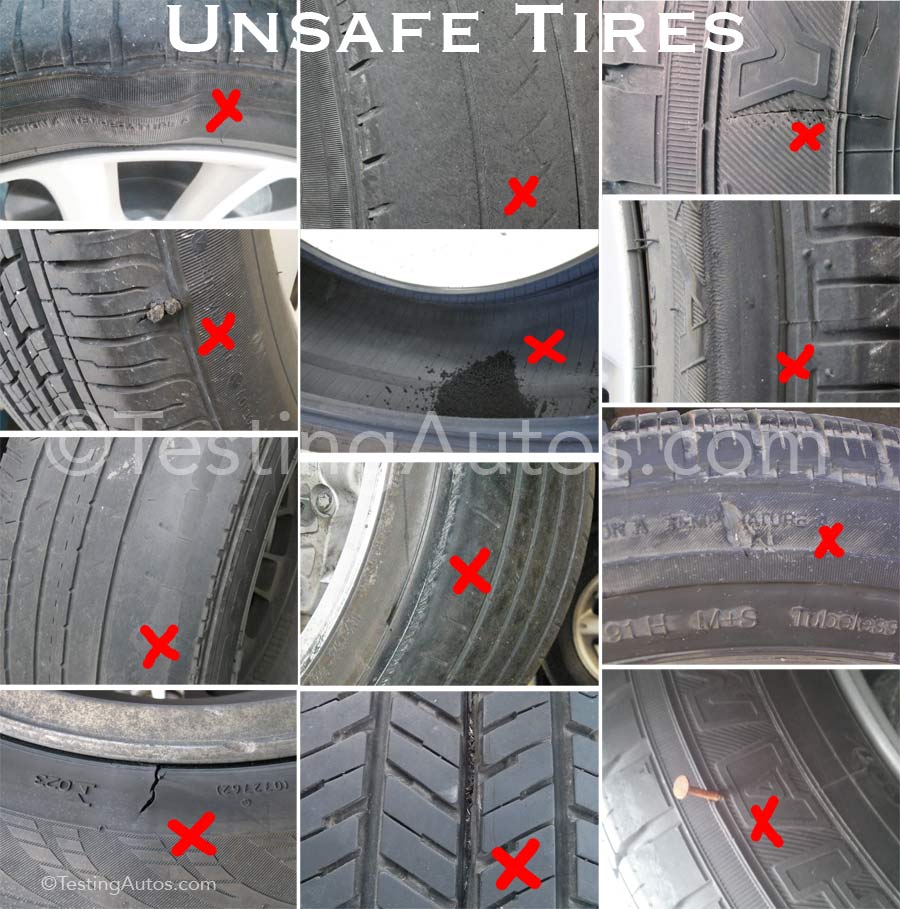
Credit: www.testingautos.com
How Do I Know When My Tires Need Replacing?
It’s important to regularly check your tires to ensure they are in good condition and properly inflated. You should also have your tires inspected by a professional mechanic at least once a year. There are several signs that indicate it’s time to replace your tires, including:
Tread wear – If the tread on your tires is worn down, it means they need to be replaced. To check the tread depth, insert a quarter into the groove of the tire. If you can see above George Washington’s head, the tread is shallow and needs to be replaced.
Cracks or cuts – If you notice any cracks or cuts in your tires, it’s time for new ones. These can weaken the structure of the tire and cause a blowout.Bulges or blisters – Any bulges or blisters on the surface of the tire indicate that the tire has been damaged and needs to be replaced.
Do I Need to Replace Tires at 5 32?
If your tires have 5/32″ of tread depth remaining, they need to be replaced. A general rule of thumb is that when tire tread reaches 4/32″, it’s time to start shopping for new tires. But other factors can also affect how long your tires will last. For example, if you frequently drive on rough or gravel roads, your tires will wear down faster and need to be replaced sooner.
It’s important to replace your tires before they reach the legal minimum tread depth in your state. In most states, that’s 2/32″. If you’re caught driving on bald tires, you could be fined and may even be liable if an accident occurs as a result of your worn-out tires.
So if your tires have 5/32″ of tread left, it’s time to start shopping for new ones. And don’t wait until they’re completely bald before making the switch!
Should I Replace My Tires at 4 32?
If your tires are starting to show signs of wear and tear, it’s important to replace them as soon as possible. Depending on the severity of the damage, you may be able to get away with replacing just one tire. However, if all four tires are showing signs of wear, it’s best to replace them all at the same time.
This will ensure that your car is safe to drive and will help you avoid any expensive repairs down the road.
Should I Replace My Tires at 3 32?
It’s generally recommended that you replace your tires when they reach 3/32″ of tread depth. At this point, the tires are considered to be at the end of their usable life and performance will start to degrade. Additionally, the risk of hydroplaning and other accidents increases as tread depth decreases.
If you’re unsure about whether or not your tires need to be replaced, there’s a simple test you can do at home. Take a quarter and insert it into the tire tread – if the top of Washington’s head is covered by the tread, you’re still good to go. If his entire head is visible, it’s time for new tires.
Conclusion
Tires are an important part of a car, and they need to be replaced when they get too worn down. There are a few different ways to tell when tires need to be replaced, and it is important to keep an eye on them so that you can replace them before they cause any problems.
Government Tracking Device on Tire – What You Need to Know
The government has been tracking devices on tires for many years now. This is a very controversial topic because some people believe that the government is using these devices to track their movements and spy on them. However, there are also many people who believe that the government is using these devices to help keep track of criminals and prevent them from fleeing the country.
Regardless of your opinion on this matter, it is important to understand how these devices work and what they are used for.
We all know that the government likes to keep tabs on us. They track our phone calls, our emails, and even our internet usage. Now it seems they may be taking things one step further by tracking our tires.
According to a recent report, the Department of Homeland Security is developing a program that would place tracking devices on the tires of vehicles entering the United States. The goal of this program is to collect data on the movements of these vehicles in order to better monitor border security.Critics are already voicing their concerns about this potential invasion of privacy.
They argue that this program could be used to track the movements of American citizens, not just those crossing the border. And what’s to stop other government agencies from getting their hands on this data? Once it’s out there, it could be used for any number of purposes – none of them good.
This is yet another example of why we need to remain vigilant when it comes to protecting our privacy rights. We can’t let the government get away with these kinds of intrusions without a fight.

Credit: www.snopes.com
How Do I Know If My Car Has a Tracking Device on It?
If you think your car may have a tracking device on it, there are a few things you can do to check. First, take a look around the exterior of your vehicle. Look for any unusual wires or antennas that may be attached to the car.
If you see anything suspicious, you can try disconnecting the battery to see if the device is still active. Another way to check is to use a GPS tracker app on your phone. If there is a tracking device on your car, it will show up as an unidentified moving object on the map.
You can also try driving in different patterns to see if the tracker is able to keep up with your movements. If it does, then it’s likely that your car has a tracking device installed.
Do Tires Have Rfid Chips in Them?
Yes, tires do have RFID chips in them. Tire companies began putting RFID chips in their products in the early 2000s as a way to track inventory and prevent counterfeiting. The chips store information such as the tire’s size, brand, and manufacturing date.
Some newer tires also have sensors that can monitor tire pressure and report any issues to the driver or a central monitoring system.
Can the Government Track Your Car?
Most people believe that the government can track their car if they want to. While it is true that the government has access to many tools that allow them to track cars, they generally do not use these tools to track individual cars. The main reason the government would want to track a car is if they suspect it is being used for criminal activity.
If the government has a warrant, they can track a car using GPS. However, warrants are typically only issued if there is probable cause to believe that a crime has been committed or is about to be committed.
How Can I Block a Tracking Device on My Car?
If you’re concerned about someone tracking your car, there are a few things you can do to block the signal. First, you can purchase a GPS jammer. These devices emit a signal that interferes with GPS tracking devices, rendering them useless.
You can also wrap your car in aluminum foil. This may sound like an old wives’ tale, but it actually works. The aluminum foil creates a barrier that blocks the GPS signal from reaching the tracker.
Finally, you can simply remove the battery from the tracker. This will disable the device and prevent it from transmitting any data.
Police are tracking you and your license plates
Tire Tracking Device
If you’ve ever had a flat tire or been stranded on the side of the road, you know how frustrating it can be. But what if there was a way to prevent these situations from happening in the first place? That’s where tire tracking devices come in.
Tire tracking devices are small gadgets that attach to your tires and track their pressure, tread depth, and other important information. This data is then sent to your smartphone or tablet so you can always know when it’s time to inflate or replace your tires. There are a few different types of tire trackers on the market, but they all have one common goal: to keep you safe on the road.
So whether you’re looking for a basic model or something with all the bells and whistles, there’s sure to be a tire tracker out there that’s perfect for you.
Conclusion
The government is planning to tracking devices on tires in order to collect data on drivers. The devices would be able to track the location, speed, and direction of vehicles. The data collected would be used to improve traffic safety and congestion.
The plan has been met with criticism from privacy advocates, who argue that the government should not be collecting this type of data without a warrant.
How to Fill Nitrogen Trailer Tires
If you’re looking to fill nitrogen trailer tires, there are a few things you need to know. First, it’s important to understand that nitrogen is an inert gas, meaning it doesn’t interact chemically with other elements. This makes it ideal for filling tires, as it won’t cause the tire to degrade over time.
Second, you need to have the right equipment for the job. A standard air compressor won’t be able to generate enough pressure to fill nitrogen trailer tires – you’ll need a special nitrogen-specific compressor. Finally, once you’ve got your equipment set up, simply attach the hose to the valve stem and start filling!
- Park the trailer on level ground and block the wheels
- Release the air from all tires using the tire valve stems
- Remove the cap from the nitrogen fill port on the trailer
- Connect a nitrogen filling hose to the nitrogen fill port
- Turn on the nitrogen supply and fill each tire to the desired pressure
- Remove the filling hose and replace the cap on the nitrogen fill port when finished
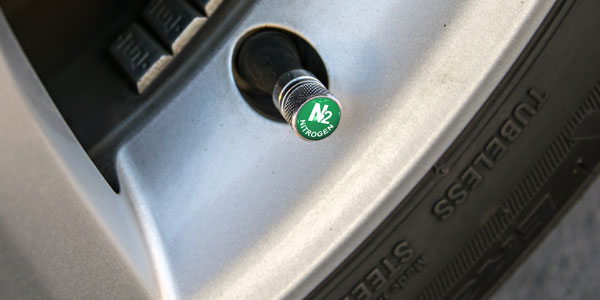
Credit: www.lesschwab.com
Can I Fill Nitrogen Tires Myself?
Yes, you can fill nitrogen tires yourself with a nitrogen tank and regulator. The process is similar to filling a tire with air, but you’ll need to adjust the regulator to the correct PSI. You can find specific instructions for your vehicle in the owner’s manual.
There are several benefits to filling tires with nitrogen rather than air. Nitrogen is less likely to leak out of tires than air, so they will stay inflated longer. Nitrogen also doesn’t expand and contract as much as air in response to changes in temperature, so your tire pressure will be more consistent.
This can improve fuel economy and extend the life of your tires.
Can You Put Nitrogen in Trailer Tires?
You may have heard that nitrogen is used in some car and truck tires. It’s also used in aircraft tires, racecar tires and other high-performance tires. But can you use nitrogen in trailer tires?
The answer is yes! You can put nitrogen in trailer tires. In fact, many RV and trailer manufacturers recommend using nitrogen in your trailer’s tires.
Here’s why:Nitrogen molecules are larger than oxygen molecules. That means they escape from tire pores at a slower rate than oxygen molecules do.
So, when you inflate your trailer’s tires with nitrogen, the tire pressure stays more consistent over time. That’s important because proper tire inflation is critical to maintaining tire safety and longevity.Another advantage of using nitrogen in your trailer’s tires is that it helps keep them cooler.
When a tire gets hot, it can expand and potentially fail. Nitrogen-filled tires run about 10 degrees cooler than air-filled ones, so they’re less likely to overheat on long trips or during extended periods of use.If you’re considering inflating your trailer’s tires with nitrogen, be sure to ask your local tire dealer or service center about the best way to do it.
How Do You Fill Nitrogen Filled Tires?
If your car has nitrogen-filled tires, you may be wondering how to properly fill them. Here’s a quick guide on how to do just that:1. Find a nitrogen filling station.
These are typically found at auto dealerships and tire retailers.2. Connect the hose from the nitrogen tank to the valve stem on your tire.3. Slowly open the valve on the nitrogen tank and allow the gas to flow into your tire until it is full.
Make sure not to overfill!4. Once your tire is full, replace the cap on the valve stem and disconnect the hose from your tire.
Is It Ok to Mix Air And Nitrogen in Tires?
It’s not uncommon for people to mix air and nitrogen in their tires, especially if they’re topping off their tires or filling them up for the first time. While there’s nothing wrong with doing this, it’s important to know that mixing air and nitrogen can result in an uneven distribution of pressure in your tires. This can lead to decreased performance and fuel economy, as well as increased wear and tear on your tires.
If you’re going to mix air and nitrogen, be sure to check your tire pressure frequently so that you can adjust accordingly.
Nitrogen Tire Filling
How to Fill Tires With Nitrogen at Home
If you’ve ever wondered how to fill tires with nitrogen at home, wonder no more! Here’s a step-by-step guide to get you started.First, gather your supplies.
You’ll need a nitrogen tank, a tire gauge, and a valve stem cap removal tool. If you don’t have a nitrogen tank, you can usually rent one from your local auto parts store.Next, remove the valve stem cap from the tire you want to fill.
Use your tire gauge to check the air pressure in the tire. It should be between 20 and 30 PSI.Now it’s time to connect the hose from the nitrogen tank to the valve stem on the tire.
Once connected, open up the valve on the tank and let the nitrogen flow into the tire until it reaches the desired PSI level. Typically, this will be between 32 and 36 PSI for most cars. Close off the valve on both the tank and tire when finished filling.
Finally, replace the valve stem cap on the tire and you’re all set! Now that wasn’t so difficult was it?
Conclusion
If you’re wondering how to fill nitrogen trailer tires, you’ve come to the right place. In this blog post, we’ll walk you through the process step-by-step so you can get back on the road in no time.First, you’ll need to find a nitrogen filling station.
These are typically located at gas stations or auto shops. Once you’ve found a station, have your tires inflated with nitrogen.Next, check the pressure of your tires with a tire pressure gauge.
Nitrogen trailers should be filled to 80 psi. If your tires are not at this pressure, add or release nitrogen until they reach the correct level.Finally, remember to check your tire pressure regularly and adjust as needed.
With proper care, your nitrogen trailer tires will last longer and perform better than regular air-filled tires.
How to Check Car Tire Pressure
It is very important to check your car’s tire pressure on a regular basis. The correct tire pressure for your car can be found in the owner’s manual or on a sticker inside the driver’s door. You will need a tire pressure gauge to check the pressure.
You can find these at most auto parts stores.
- You will need a tire pressure gauge
- You can purchase one at most auto parts stores
- Park your car on a level surface and set the emergency brake
- Locate the valve stem on each tire
- The valve stem is the part of the tire that you screw the air cap onto
- Unscrew the cap from the valve stem and place the end of your tire pressure gauge onto the end of the valve stem
- Push down on the gauge to get a reading of your current tire pressure6 Compare your reading to what is printed on the sidewall of your tires or in your car’s owner’s manual to see if it is within range7 If it is not, add or release air from your tires as needed until you reach the proper pressure8 Replace each cap back onto its respective valve stem
How To: Check Tire Pressure and Inflate Tires
How Do I Know If My Tire Needs Air?
If your tire is low on air, you’ll likely notice a decrease in fuel efficiency and handling. You may also see the Low Tire Pressure Warning Light activate on your dashboard. To check your tire’s air pressure, use a reliable tire gauge and compare the reading to your car manufacturer’s recommended PSI (pounds per square inch).
If your tire is significantly low on air, add enough to reach the recommended pressure and then drive to the nearest service station to have it checked for leaks.
How Do You Check Tire Pressure at a Gas Station?
It is always important to make sure your tires are properly inflated. Checking your tire pressure at a gas station is a quick and easy way to do this.To check your tire pressure at a gas station, start by finding an air pump.
Many gas stations have these near the entrance or exit of the store. Once you find the air pump, insert your credit card or money into the machine to start it up.Then, locate the valve stem on your tire.
This is the small metal piece sticking out of your tire where air goes in. Put the nozzle of the air pump over the valve stem and press down to release air into your tire.Check the gauge on the machine to see what PSI (pounds per square inch) your tire should be at.
Most passenger cars have tires that should be between 30 and 35 PSI when they are cold (meaning they haven’t been driven for more than a mile or so). If your tires are low, add air until they reach the proper PSI level.Once you’re finished, remove the nozzle from your tire and put it back on the machine.
Make sure to put any caps back onto your valve stems as well!
How Do You Know If Your Tire Pressure is Low?
Assuming you have a standard tire pressure gauge, checking your tire pressure is low is a pretty straightforward process. First, remove the cap from the valve stem on your tire. Then, place the tip of the gauge on the valve stem and press down until you hear a hissing sound.
This lets air out of the tire so that the gauge can get an accurate reading. Once you’ve done this, read the pressure on the gauge. If it’s below 30 PSI, then your tire pressure is low and you’ll need to add air.

Credit: www.youtube.com
How to Check Tire Pressure Without Gauge
Assuming you don’t have a tire pressure gauge and need to know how to check your tire pressure without one, there are a few ways you can do this. The first way is by using a simple household item: a straw! Stick the straw into the valve of your tire and then put your mouth on the other end of the straw.
Blow into the straw and see if the tire inflates. If it does, then your tire pressure is good. If not, then you’ll need to add air to your tires.
Another way to check your tire pressure without a gauge is by using something called a “tire thumper.” This is simply a piece of wood or metal that you hit against your tires. Be sure to use something that won’t damage your tires (like an old broom handle) and be sure to hit all four tires evenly.
Listen for a solid sound when you thump each tire; if it sounds hollow, then that means there’s not enough air in that particular tire.Of course, the best way to check your tire pressure is with an actual gauge, but if you don’t have one handy, these two methods will do in a pinch!
How to Check Air Pressure in Tires at Gas Station
If you’re like most people, you probably don’t think much about your car’s tires until there’s a problem. But checking your tire pressure regularly is actually a very important part of maintaining your vehicle. Not only does it improve fuel efficiency, but it can also help extend the life of your tires.
The best way to check tire pressure is at a gas station with an air compressor. Most gas stations have these available for customer use, and they’re usually free or very cheap to use. Just find the right size nozzle for your tires and screw it on.
Then, add air until the gauge reads the correct pressure.It’s important to know what the correct tire pressure is for your vehicle before you start adding air. You can usually find this information in the owner’s manual or on a sticker inside the driver’s side door frame.
If you can’t find it there, a quick online search should do the trick.Once you’ve added air to all four tires, be sure to unscrew the nozzle and put it away so that someone else can use it. And that’s all there is to it!
Checking your tire pressure only takes a few minutes, but it could save you money and hassle down the road.
Where to Check Tire Pressure for Free
Most people know that it’s important to check your tire pressure regularly. But did you know that you can do it for free? Here are a few places to check your tire pressure:
1. Your local gas station. Many gas stations have air pumps that you can use for free. Just be sure to check the pressure before you start pumping, so you don’t overinflate your tires.
2. Your local car dealership or service center. Many of these places will have an air compressor that you can use for free. They may even check your tire pressure for you while you’re there!
3. Your local hardware store or home improvement store. These stores often have air compressors that customers can use for free. Again, just be sure to double-check the pressure before inflating your tires.
4. Online tools and apps. There are a number of online tools and apps that can help you check your tire pressure (often for free). One popular option is the Tire Pressure Monitoring System (TPMS) from Tire Rack .
This tool allows you to enter in your vehicle information and then displays the recommended tire pressures for your specific vehicle make and model – all for free!
Conclusion
If you’re not sure how to check your car’s tire pressure, or if you’ve never done it before, don’t worry – it’s actually pretty easy! All you need is a tire pressure gauge, which you can find at most auto parts stores.To use the gauge, simply remove the cap from your car’s tire valve and press the gauge onto the valve.
The gauge will give you a reading of the current pressure in your tires. Compare this to the recommended pressure for your specific vehicle (usually found in your owner’s manual or on a sticker inside the driver’s door), and inflate or deflate your tires as needed.It’s important to check your car’s tire pressure regularly – at least once a month – as even a small change can impact how well your car handles on the road.
And if you’re ever unsure about what to do, just ask an expert at your local auto parts store – they’ll be happy to help!

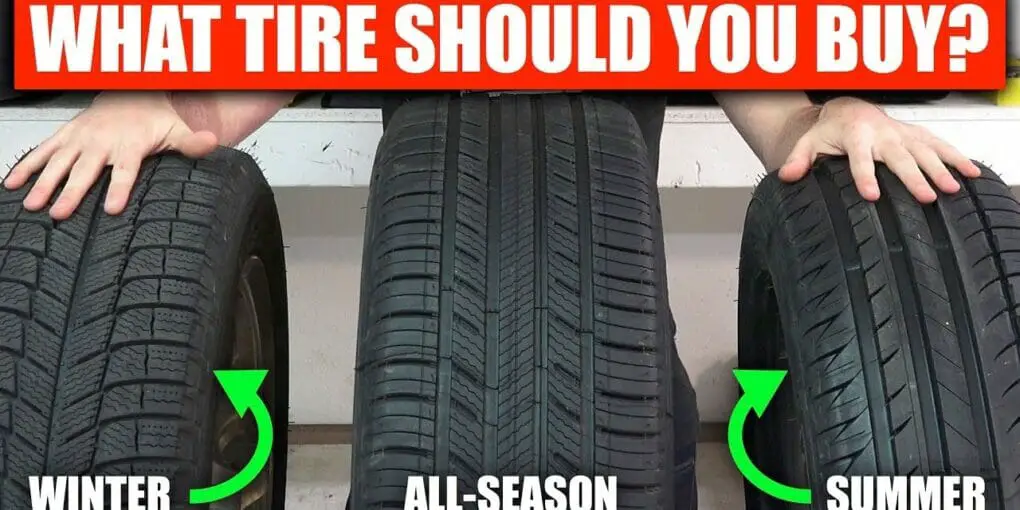
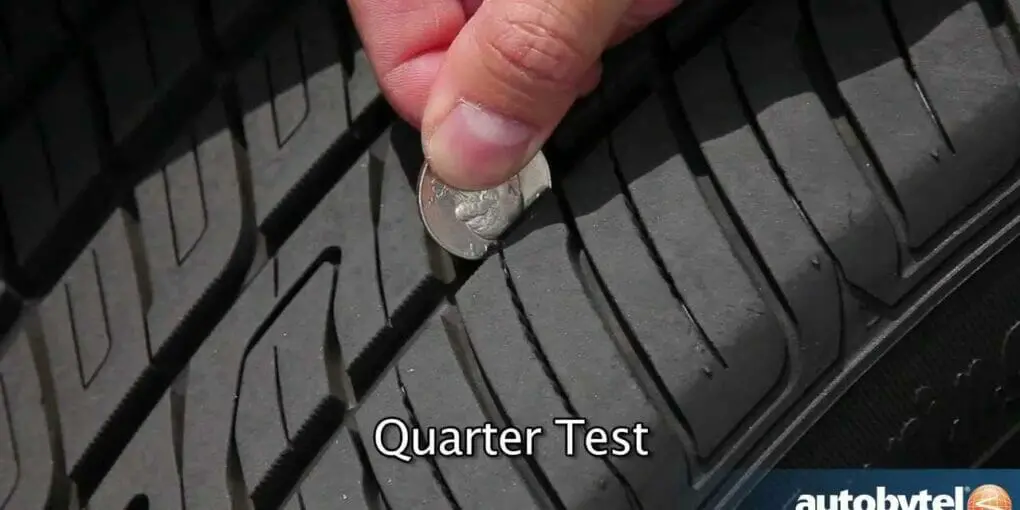

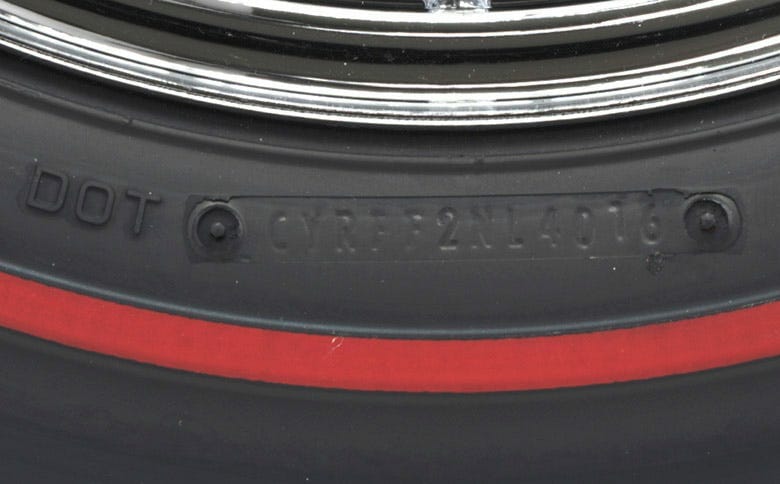
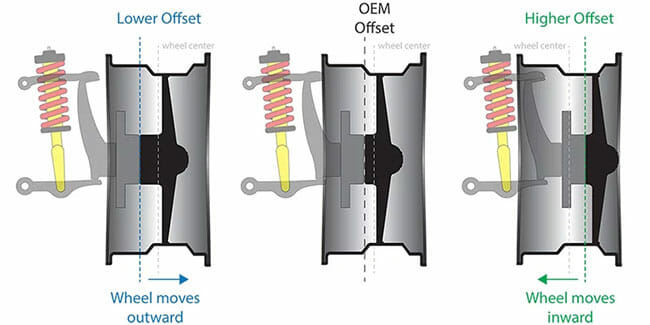
![4 Warning Signs That It's Time to Change Your Tires [Update]](https://tirehubz.com/wp-content/uploads/2022/10/77532a08aeee433ebcdf6775b87fbe59-1020x510.jpg)
